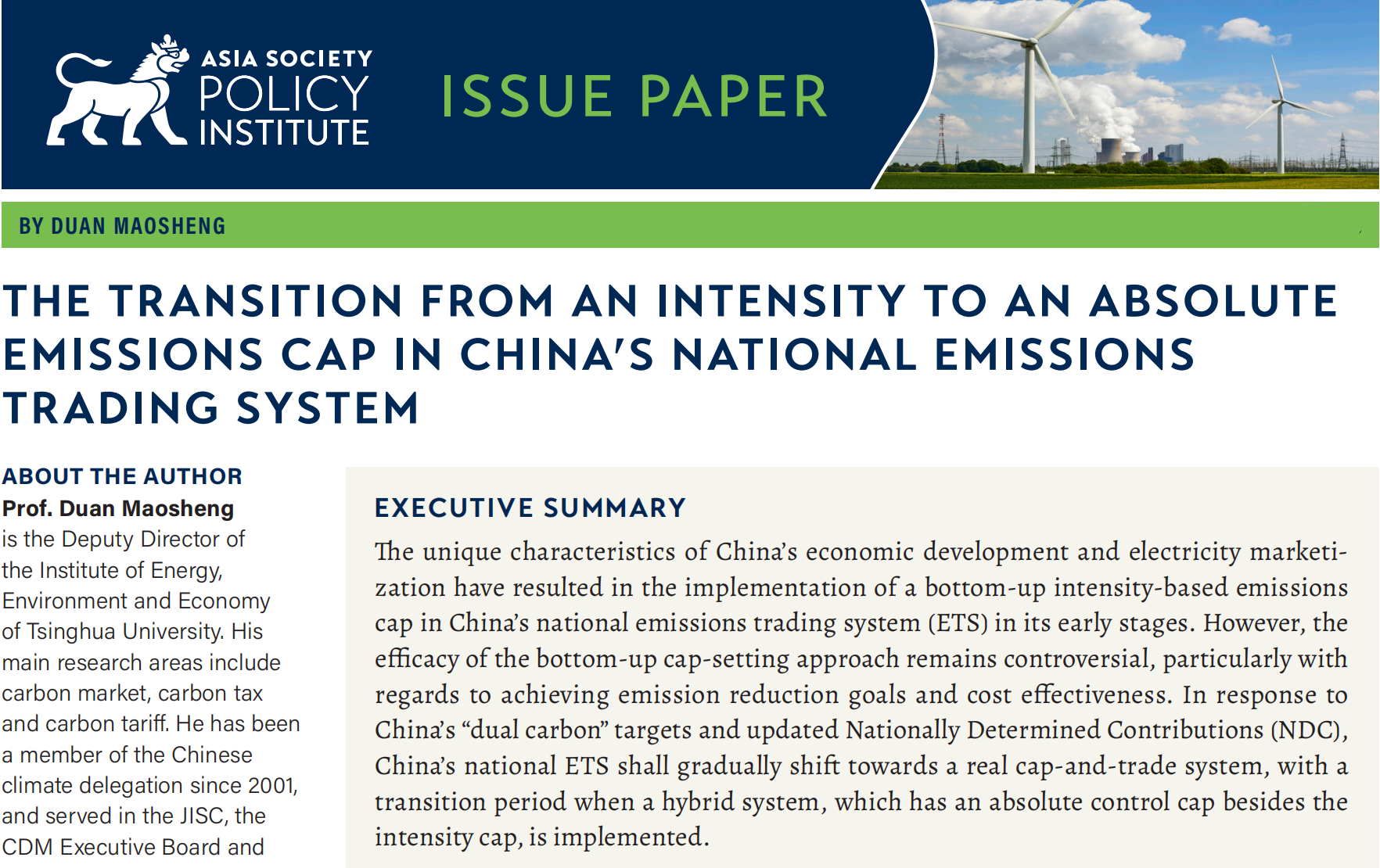Recently, Duan Maosheng, the Deputy Director and researcher of the Institute of Energy, Environment and Economy at Tsinghua University, published an article online regarding the total quota issue in China's national carbon trading system titled The Transition From an Intensity to an Absolute Emissions Cap in China's National Emissions Trading System. The article was published on the website of the Asia Society, and the abstract is as follows.

The unique characteristics of China’s economic development and electricity marketization have resulted in the implementation of a bottom-up intensity-based emissions cap in China’s national emissions trading system (ETS) in its early stages. However, the efficacy of the bottom-up cap-setting approach remains controversial, particularly with regards to achieving emission reduction goals and cost effectiveness. In response to China’s “dual carbon” targets and updated Nationally Determined Contributions (NDC),China’s national ETS shall gradually shift towards a real cap-and-trade system, with a transition period when a hybrid system, which has an absolute control cap besides the intensity cap, is implemented.
This research analyzes the cap-setting approaches used in China’s ETSs, the underlying reasons for choosing intensity caps in China, and major issues related to the transition from an intensity cap to an absolute cap in China’s national ETS. Based on this research,key suggestions regarding next steps include:
• Impacts of a change in cap-setting approach, especially on the sectors, companies,regions and the overall economy, should be carefully analyzed, suitable measures to mitigate risks of carbon leakage ensured and a transition roadmap prepared.
• Absolute cap-setting approaches in China’s ETS pilots should be carefully analyzed to identify the most appropriate elements for the national system. Furthermore, it will be beneficial if one or more pilots could be selected to test proposed approaches including their technical, as well as social and political aspects.
• Policy tools should be established to address possible serious unexpected surpluses or shortages of allowance supply under an absolute cap. To address oversupply these can include market stability operations, allowance banking and long-term stability and predictability in system design; whilst to address shortages these can include auctioning allowances with a price floor, sales of allowances at fixed prices and reserved allowances for new entrants.